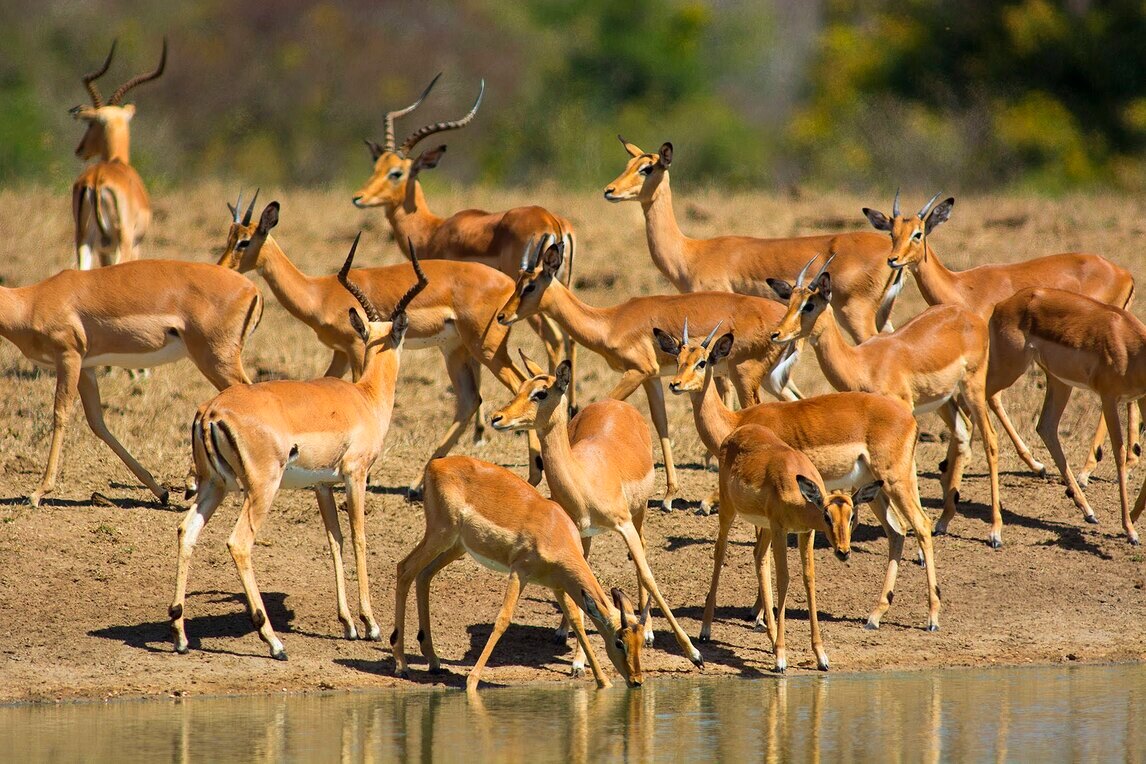Mikumi National Park Tanzania
Size: 3,230 sq km (1,250 sq miles)
Established: 1964
Distance from Dar es Salaam: 283 km (175 miles)
Size: 3,230 sq km (1,250 sq miles)
Established: 1964
Distance from Dar es Salaam: 283 km (175 miles)

The landscapes in Mikumi National Park can easily be compared to those of the Serengeti National Park as acacias, baobabs, and tamarinds dot the savannah. The Ruhebo and Uluguru mountains as well as some interesting rock formations can be seen close to the northern boundary of the park and the Mkata plains are by far the best place for game viewing. The park is famous for its healthy populations of elephants and buffaloes which can easily be spotted out on the plains. The tamarind trees are a favorite spot for elephants and giraffes who spend hours eating the fruits.
Mikumi National Park is Tanzania’s fourth-biggest national park. It’s additionally the most open from Dar es Salaam. With confirmed wildlife sightings, it makes a perfect safari goal for those who are busy and have less time to travel, two days or more can get you an opportunity to explore the splendor of Mikumi National Park. Since the formation of a highway connecting Mikumi National Park to Dar es Salaam Tanzania’s busiest and largest city, Mikumi National Park has been slated to be a major hotspot for the travel industry in Tanzania. Situated between the Uluguru Mountains and the Lumango Go, Mikumi is the fourth-biggest national park in Tanzania and just a couple of hours’ drive from Tanzania’s biggest city. The park center has a wide assortment of natural life that can be simply spotted and furthermore very much suitable to viewing in a game drive. Its vicinity to Dar es Salaam and the measure of wildlife that live inside its fringes makes Mikumi National Park a well-known choice for those travelers who don’t have much time but also want
to enjoy a wildlife safari to Mikumi National Park.
Another highlight in terms of wildlife is the greater kudus and sable antelopes. These shy antelopes like to hang around the Miombo woodlands in the southern part of the park near the Vuma Hills area.
The Mkata plains are also a great place for birding. Mikumi boasts of a respectful 400 species of birds with the most common ones being the black-bellied bustards, guinea fowls, marabou storks, bateleur eagles, oxpeckers, colorful lilac-breasted rollers, and yellow-throated long claws. These are just a few of the many species you are likely to spot whilst there. The park also witnesses the passing of migrating birds from Europe during the rainy season.
Mikumi National Park is also home to lions as well as leopards. Even the African wild dog is present and spotting this rare creature can be a real treat for visitors.
There are two artificial pools approximately 5 km north of the main gate and both of them are famous for Mikumi’s few hippos. Furthermore, the pools attract an array of water birds such as blacksmith plovers, cattle egrets, various herons, fish eagles, and many more.
As Mikumi National Park is part of the Selous ecosystem it always has wildlife moving in and out of the park. This constant movement is however being disrupted due to the A7 tarmac road that runs through the park.
Overview
Mikumi was made a National Park in 1964 and is 3,230 sq. km (1,250 sq. miles) in size. This enormous area links the Julius Nyerere National Park (formerly Selous) with the forested abundance of the eastern arc mountains, and so is an important part of a huge ecosystem of rivers, flood plains, forests, and woodlands. The northern plains that surround the Mkata River are readily accessible and are the best places to go for wildlife. A good network of tracks means that a wide variety of wildlife including buffalo, cape-hunting dogs, cheetahs, and lions are approachable and can be enjoyed at close quarters. Wildlife Mikumi abounds with big game, including buffalo, elephant, big cats, hippos, crocodiles, giraffes, zebra, and eland as well as smaller species. Some of the more unusual species such as sable antelope, Lichtenstein’s hartebeest, and greater kudu inhabit the wooded areas surrounding the Mkata plains and are more of a challenge to find. But they’re there!
Getting there
Air. The Mikumi National Park airstrip is at Kikoboga and scheduled flights operate daily from all the main centers in Tanzania, but often routing via Dar es Salaam.
Road. An approximate 4-hour drive, (283 km) on a well-surfaced road connects Mikumi to Dar es Salaam via Morogoro. This road also connects to Udzungwa, Iringa, and Ruaha. Its proximity to Dar es Salaam makes Mikumi a popular option for weekend visitors from the city, or for business visitors who don’t have to spend a long time on an extended safari itinerary.
Activities
Accommodation
This Park has bandas where visitors can stay as well as public and special campsites which are booked through the Headquarters in Arusha. There are also well-appointed lodges and permanent tented camps in the Park run by private companies Outside the Park there are guest houses in Mikumi town on the park border
When to go
Mikumi’s dry season lasts between May and November, but despite wet spells during the remaining months, the countryside is green and beautiful and a well-established network of roads and tracks ensures enjoyable visits all year round.
Safari ideas
On a safari from Dar es Salaam, Mikumi is en route to Udzungwa National Park and in the dry season a gravel road links up with Nyerere National Park (formerly the Selous) from where one can fly back to Dar es Salaam. From Mikumi, one can also carry on through to Iringa and Ruaha National Park, either by air or road.